Art World
6 Amazing Global Art Destinations for the Luxury Traveler, From a Museum Atop a Japanese Skyscraper to a Light Show in the Outback
We’ve rounded up some of the best—and most decadent—art excursions from around the globe.
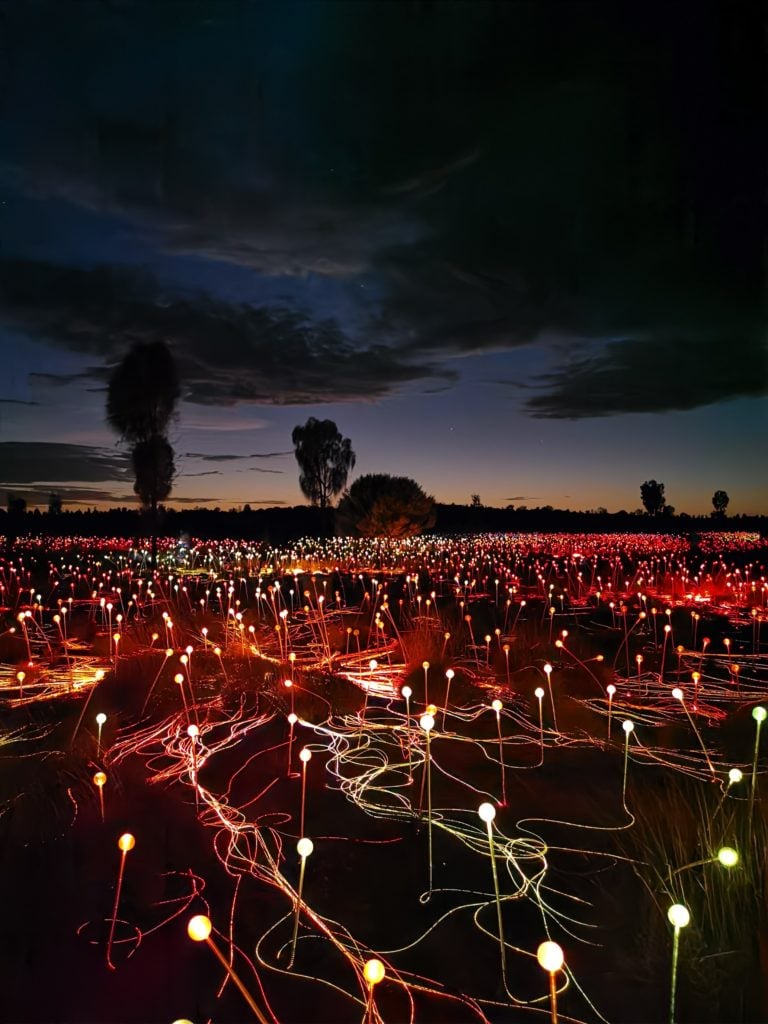
We’ve rounded up some of the best—and most decadent—art excursions from around the globe.

Rachel Raudenbush

As much as we love experiencing art close to home, seeing some of the world’s most captivating works requires packing. The truly committed will book flights, check bags, and endure hours of travel to experience the limits of human imagination, and how it manifests in groundbreaking works of art.
Luckily, when they arrive, there are opulent hotels to check into, Michelin-starred restaurants to visit, and more than one rooftop pool to enjoy—alongside, of course, the opportunity to experience a new culture.
From the beaches of Rio to a Nile River island, we’ve rounded up six of the most exciting art destinations from around the world—and explained how you can enjoy them in the most luxurious way possible.
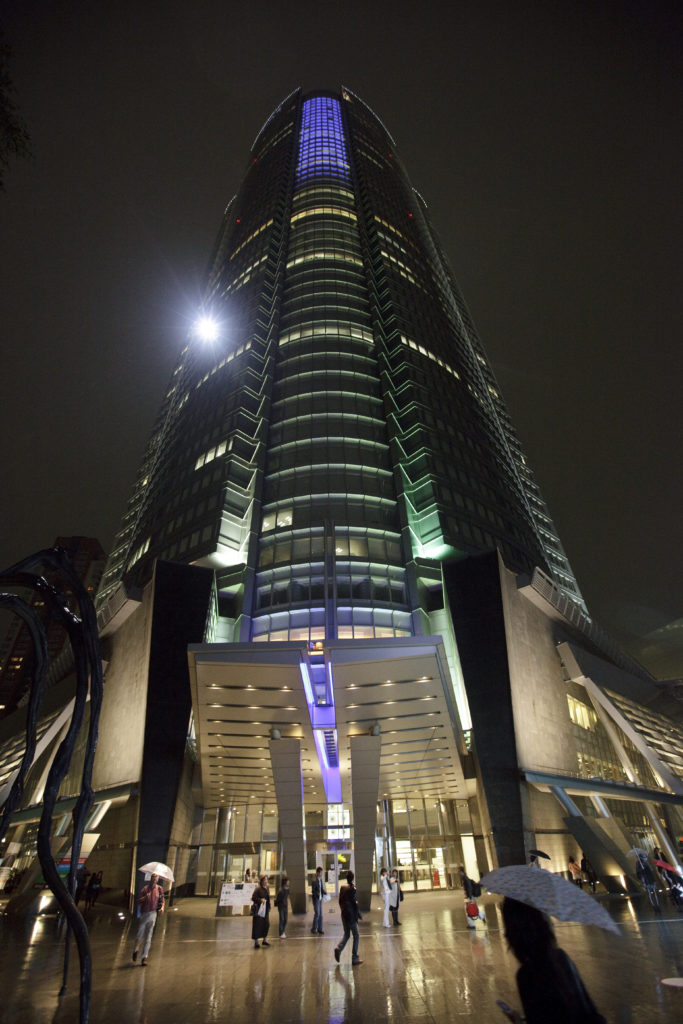
The 48-story tower, atop which sits the Mori Art Museum. Photo courtesy Getty Images.
WHAT IT IS: Located on the top five floors of a Tokyo skyscraper, the Mori Art Museum houses contemporary art with an emphasis on thought-provoking ideas. With no permanent collection, exhibits rotate roughly every two to three months, featuring works from up-and-coming artists and internationally acclaimed superstars.
WHERE IT IS: At the top of a skyscraper in Tokyo’s Roppongi Hills neighborhood.
WHERE TO STAY: Hoshinoya Tokyo, a luxurious take on the traditional Japanese ryokan, or inn, emphasizes the country’s culture, asking guests to remove their shoes on arrival and providing kimonos in each room. A thermal bath, located on the 17th floor, pulls its mineral-rich water from nearly 5,000 below the hotel itself.
WHERE TO EAT: Nishiazabu Taku, a two-Michelin-star venue, which serves some of the world’s finest sushi and stands out for its innovative wine pairings.
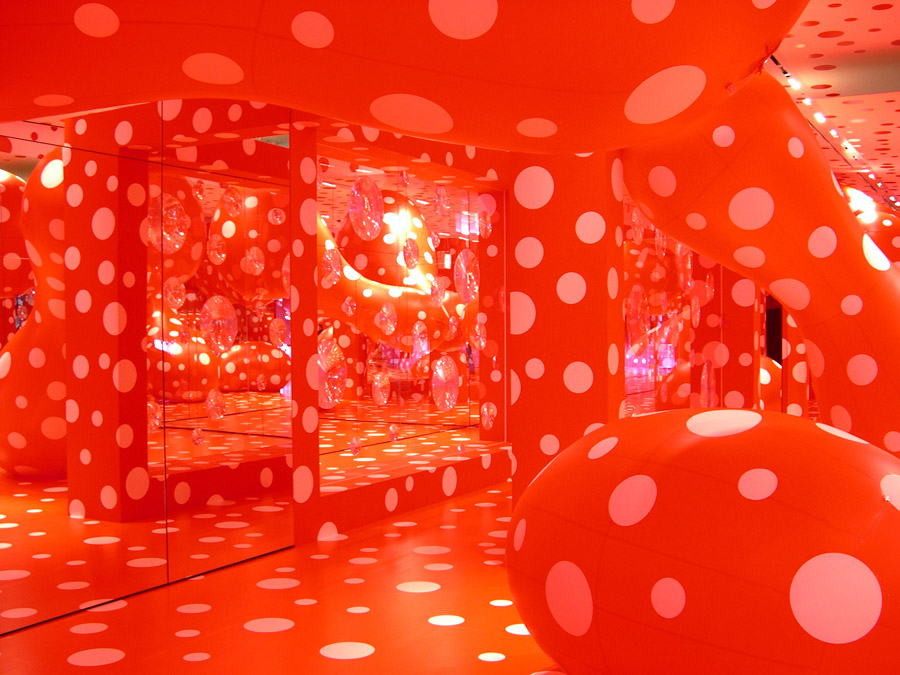
Installation view of Yayoi Kusama’s Dots Obsession in ‘Kusamatrix’, Mori Art Museum, Tokyo, 2004. Photo courtesy Getty Images.
WHERE TO SHOP: Archive Store, a subterranean temple to the most-coveted Japanese and international designers, including Rei Kawakubo, Yohji Yamamoto, and Raf Simons.
OTHER ART TO SEE: teamLab Borderless, a partnership between Mori and the art-tech collective teamLab, is an immersive digital art museum that allows visitors to interact with the exhibits. (You can even draw creatures that come alive within the museum’s virtual ecosystem.) A crowd favorite, it drew more visitors than any other single-artist destination in 2019.
FUN FACT: Just one floor above the museum, an observation deck offers a stunning view of “the art that is the city” at 750 feet above sea level.
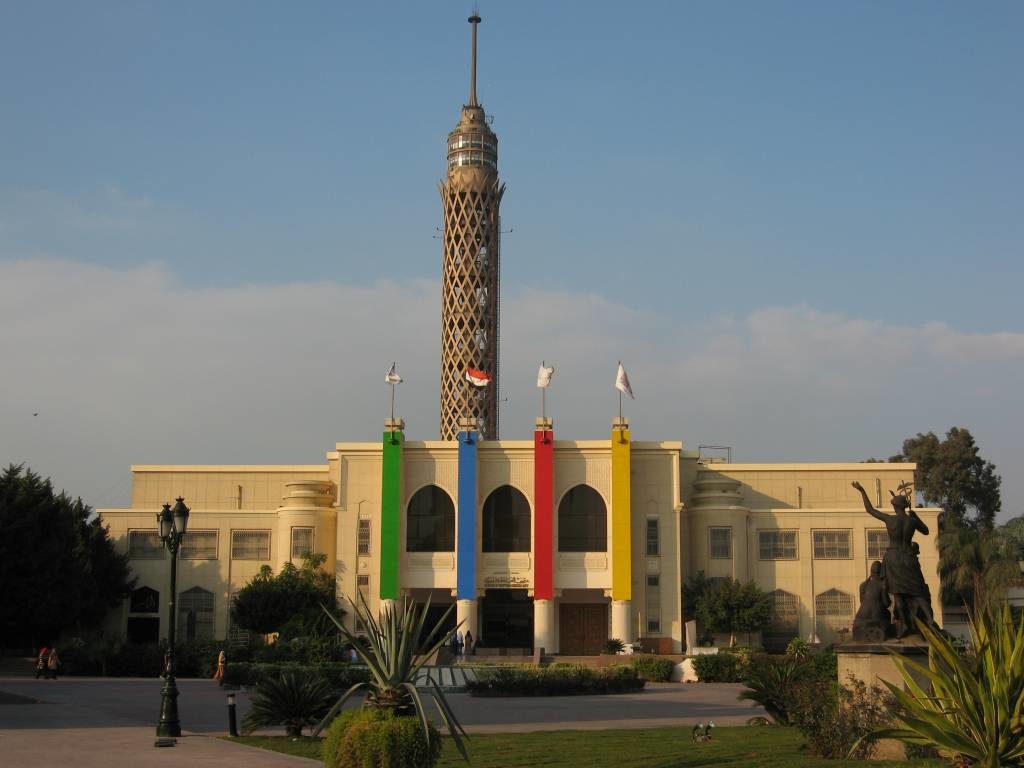
The Gezira Center for Modern Art. Photo courtesy Getty Images.
WHAT IT IS: A museum for modern and contemporary art with over 10,000 works documenting the development of Egypt’s art movements from the early 20th century to date. Located on the well-groomed grounds of the Cairo Opera House, the permanent collection includes works by Mahmoud Mokhtar, Mahmoud Said, and Youssef Kamel.
WHERE IT IS: On Gezira, an island located on the Nile River in central Cairo.
WHERE TO STAY: Le Riad Hotel de Charme, a colorful boutique hotel in the center of Old Cairo, with 17 suites inspired by the history and style of the Fatimid empire.
WHERE TO EAT: The Revolving Restaurant on the 41st floor of the Grand Nile Tower, which rotates 360 degrees every 75 minutes—meaning guests may begin their evening with appetizers and a view of the Pyramids, but enjoy dessert over the River Nile.
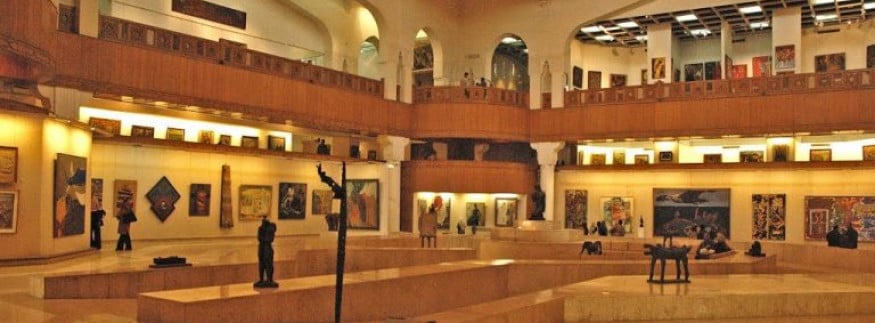
Inside the Gezira Center of Modern Art. Image courtesy the Gezira Center of Modern Art.
WHERE TO SHOP: Azza Fahmy for handcrafted gold and silver jewelry, and Ego for high-end fashion.
OTHER ART TO SEE: No trip to Cairo is complete without a visit to the Museum of Egyptian Antiquities and the Pyramids of Giza. The Grand Egyptian Museum, which is set to become the largest archaeological museum in the world, will open later this year.
FUN FACT: The collection that became the Gezira Center for Modern Art was originally assembled in 1931 and was housed in the Mousiri Palace.
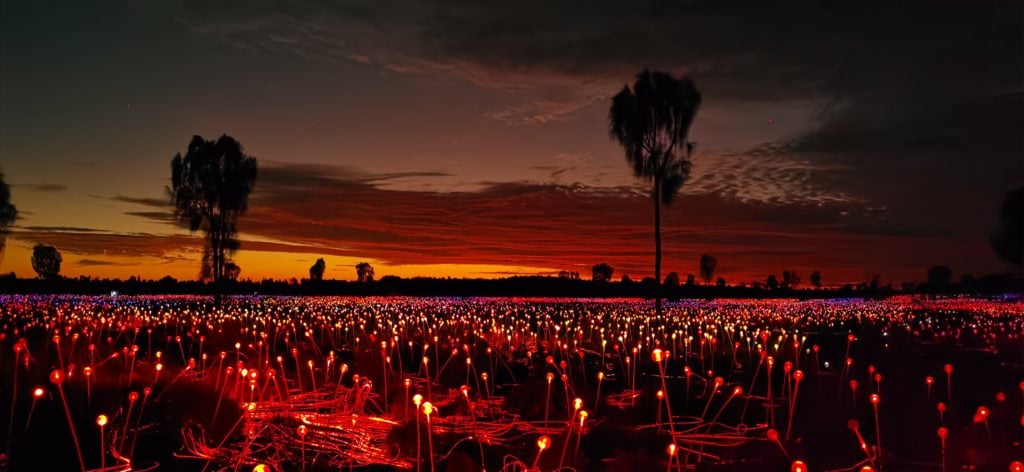
Bruce Munro’s Field of Light in Uluru. Photo by James D. Morgan/Getty Images for Huawei.
WHAT IT IS: The largest and most remote iteration of Bruce Munro’s celebrated Field of Light. At the base of Uluru, 50,000 solar-powered, fiber-optic spheres illuminate an area of the Australian outback the size of four professional soccer pitches. Munro has said he first had the idea for the installation while camping at this site in 1992.
WHERE IS IT: Uluru, a sacred sandstone rock formation, in the heart of Australia’s “Red Center,” about 280 miles away from Alice Springs.
WHERE TO STAY: Longitude 131, a luxury wilderness retreat that takes camping in the desert to great heights. In addition to a spa and restaurant, concierges are on hand to help plan bespoke experiences, from hiking tours and camel rides, to scenic flights over the surrounding area.
WHERE TO EAT: Sounds of Silence, a four-hour outdoor dining experience, which combines a desert sunset with a buffet inspired by bush-tucker (or native Australian) cuisine, a live didgeridoo performance, and a star talk, complete with telescopes.
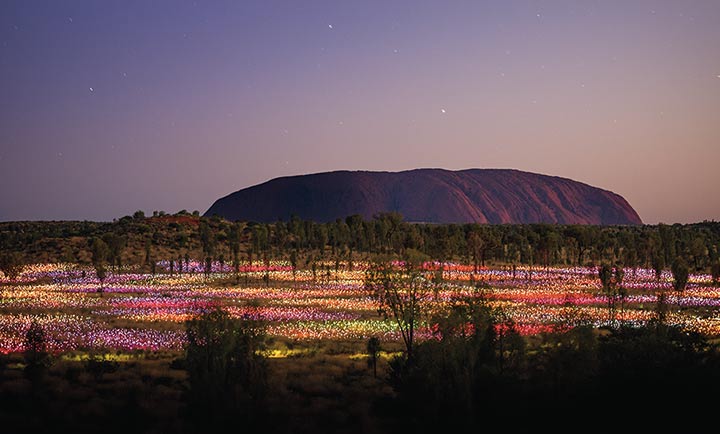
Munro’s work in Uluru. Photo courtesy Getty Images.
WHERE TO SHOP: Tjanpi Desert Weavers, a social enterprise in the nearest town of Alice Springs that works with women living in remote deserts who make woven sculptures, colorful baskets, and beaded jewelry.
OTHER ART TO SEE: Bruce Munro’s Light Shower, a delicate cascading installation, at Sails in the Desert. The hotel is also home to the Mulgara Gallery’s collection of original Indigenous art.
FUN FACT: The installation is powered by 36 portable solar panels, and its optical fiber is reusable and will be recycled for use in other installations.
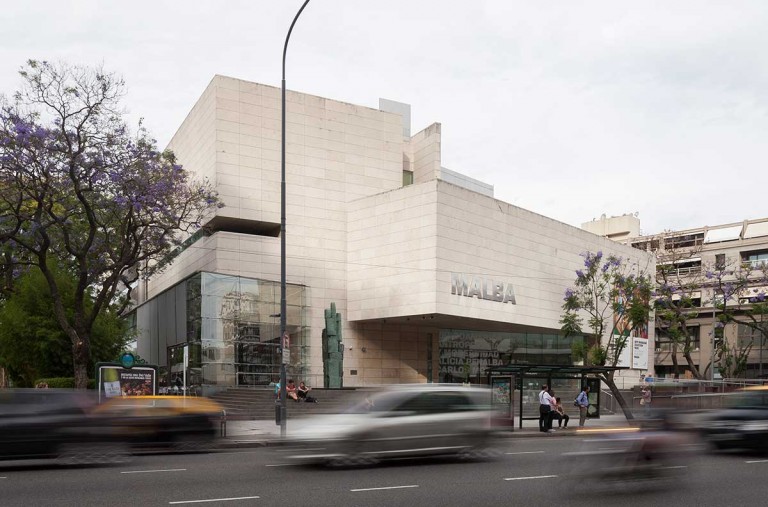
MALBA in Buenos Aires. Photo courtesy MALBA.
WHAT IT IS: A museum dedicated to preserving and championing Latin American art worldwide. Founded in 2001 to showcase the personal collection of Argentinian businessman Eduardo Constantini, MALBA has become known for its impressive permanent collection—which includes works by Diego Rivera and Antonio Berni—as well as diverse temporary exhibitions. It also serves as a cultural center, offering film screenings, literary talks, and children’s programs.
WHERE IT IS: On the historic Avenida Presidente Figueroa Alcorta in Buenos Aires.
WHERE TO STAY: Alvear Palace Hotel, an opulent hotel with Louis XVI-style touches, which opened in 1932 and has since become an icon of the city. Its rooftop features a heated indoor pool and two terraces with solariums.
WHERE TO EAT: Casa Cruz serves up inspired Argentinean cuisine, from celebrated chef Germán Martitegui, in a sultry interior of mahogany wood and red banquettes
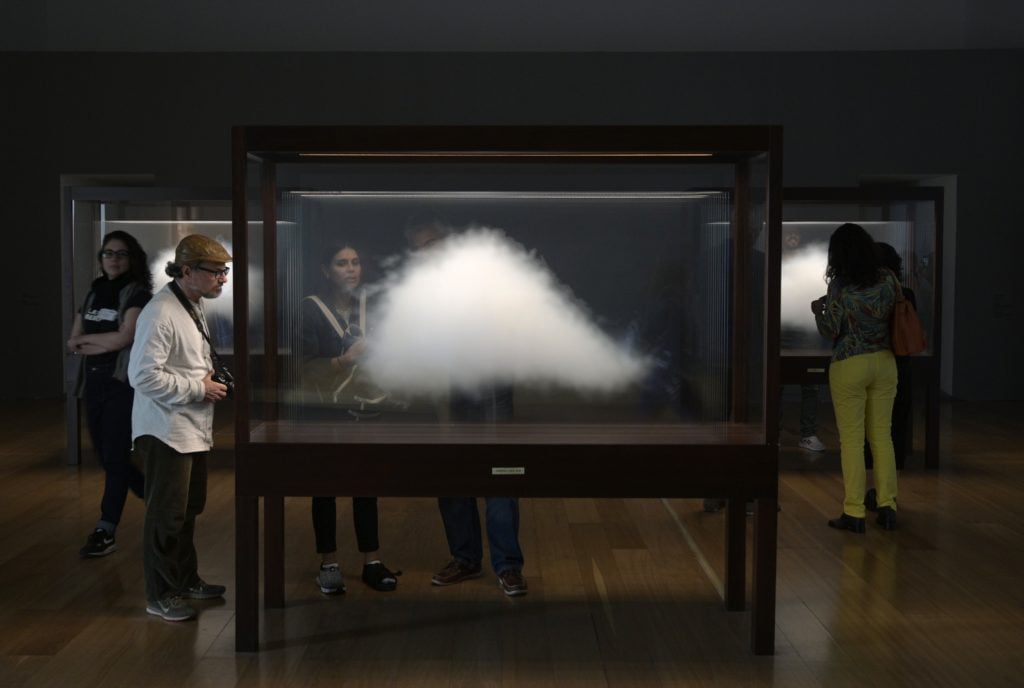
Leandro Erlich’s installation “Clouds” at the Museum of Latin American Art (MALBA) in Buenos Aires on October 2019. Photo courtesy Getty Images.
WHERE TO SHOP: Casa Cavia, a beautifully designed concept store housed in a 1927 mansion that includes a flower shop, bookstore, perfumery, and restaurant.
OTHER ART TO SEE: Herlitzka + Faria, Gachi Prieto, and Ruth Benzacar Galería de Arte.
FUN FACT: The museum’s design was selected out of 450 proposals in an open call contest. The winners were three young Argentinian architects: Gastón Atelman, Martín Fourcade, and Alfredo Tapia.
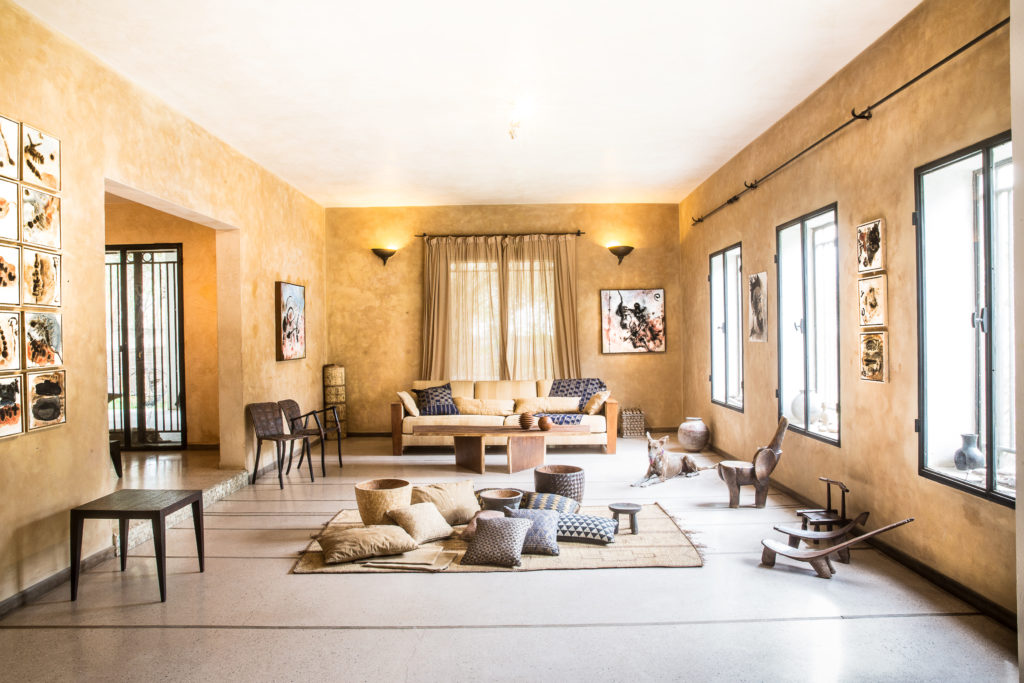
Inside Galerie Atiss. Photo courtesy Galerie Atiss.
WHAT IT IS: Established in 1996 by the Senegalese painter and textile designer Aïssa Dione, Galerie Atiss showcases modern and contemporary African art. The light-filled space features rotating exhibitions with works by Serigne Mbaye Camara, Soly Cissé, Camara Guèye, and Ousmane Diop. The gallery is closely connected with Dakar’s Biennale, Dak’Art, which will celebrate its 30th anniversary this year.
WHERE IT IS: In a ‘60s-era villa in Dakar, Senegal.
WHERE TO STAY: Radisson Blu Hotel, Dakar Sea Plaza, one of the city’s sleekest and most modern resorts, with breathtaking views of the Atlantic Ocean.
WHERE TO EAT: On the rooftop terrace of Bayékou, which fuses local produce and fresh seafood with Mediterranean influences, in a relaxed setting overlooking Ngor Beach.
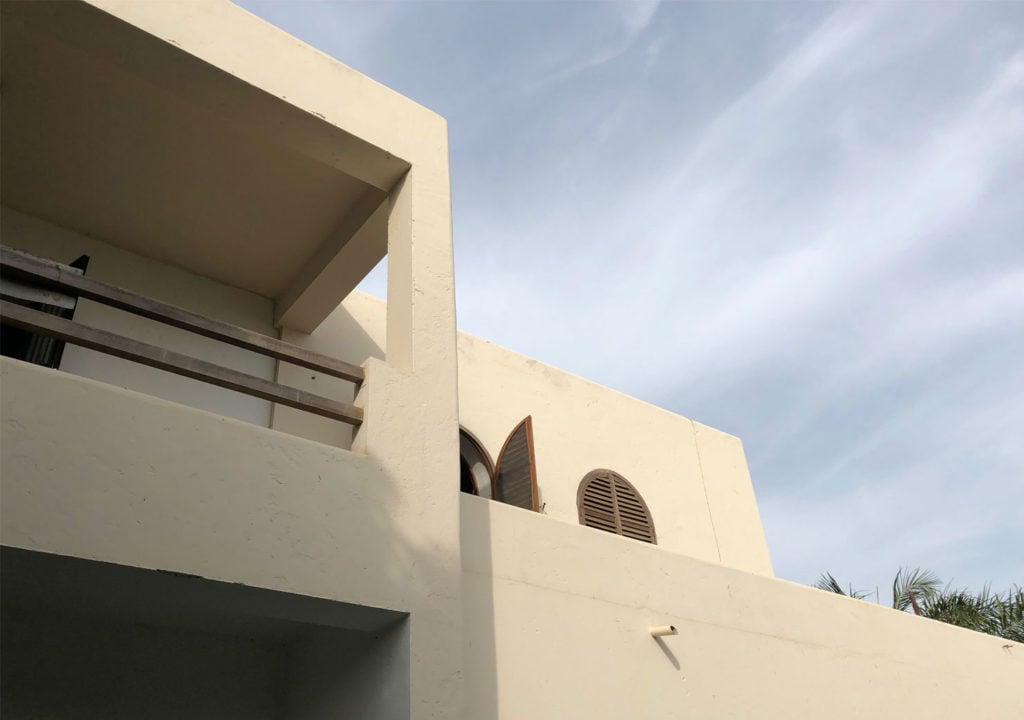
The exterior of Galerie Atiss. Photo courtesy Galerie Atiss.
WHERE TO SHOP: Bantu Wax, a trendy surfwear brand that sells patterned swimsuits and custom surfboards out of a hip reimagined shipping container.
OTHER ART TO SEE: The Museum of Black Civilizations, Galerie Cécile Fakhoury, and Dak’Art.
FUN FACT: In addition to the gallery, Aïssa Dione owns a high-end fabric brand dedicated to preserving Senegal’s traditional fabric-weaving crafts.
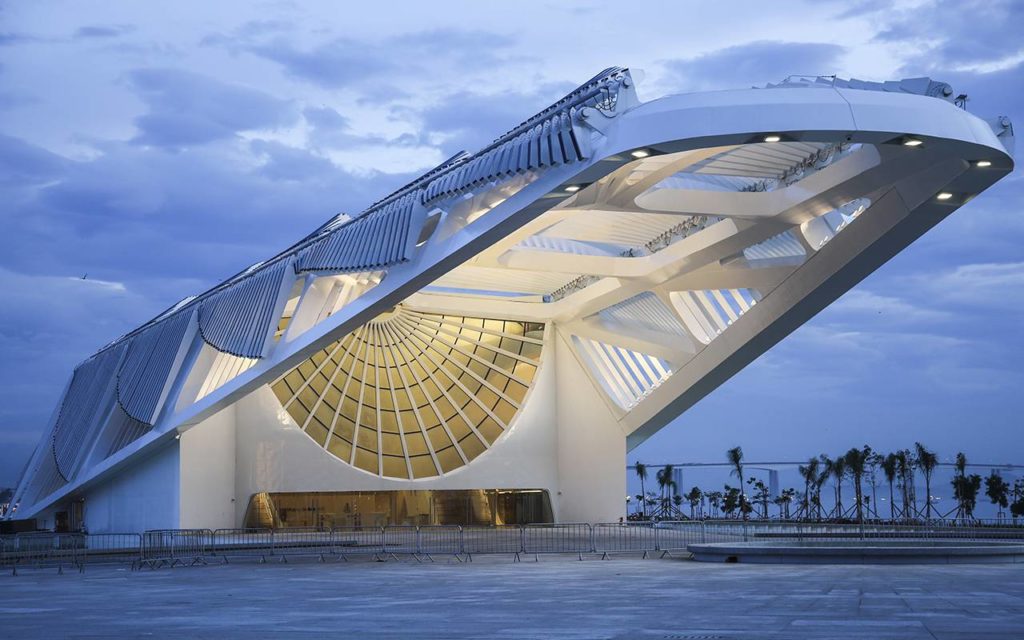
Museu do Amanhã. Photo courtesy Museu do Amanhã.
WHAT IT IS: An immense skeletal structure designed by Spanish artist and architect Santiago Calatrava, which houses a futuristic museum of science. The building is cantilevered out over the water, giving the impression it’s floating on the bay. Its design was inspired by the bromeliads in the city’s botanical garden. Inside, the museum aims at exploring the future of the planet through issues like population growth, climate change, and technological advancement.
WHERE IT IS: Next to the waterfront at Pier Maua in Rio de Janeiro, Brazil.
WHERE TO STAY: The Copacabana Palace, a monolithic Art Deco building set along a beautiful stretch of beach. It was here Fred Astaire and Ginger Rogers danced in the opening sequence of the film Carioca.
WHERE TO EAT: Oro, a two-Michelin-starred restaurant run by husband-and-wife team chef Felipe Bronze and sommelier Cecilia Aldaz. The constantly changing menu is known for its creativity, freshness and focus on cooking over fire.
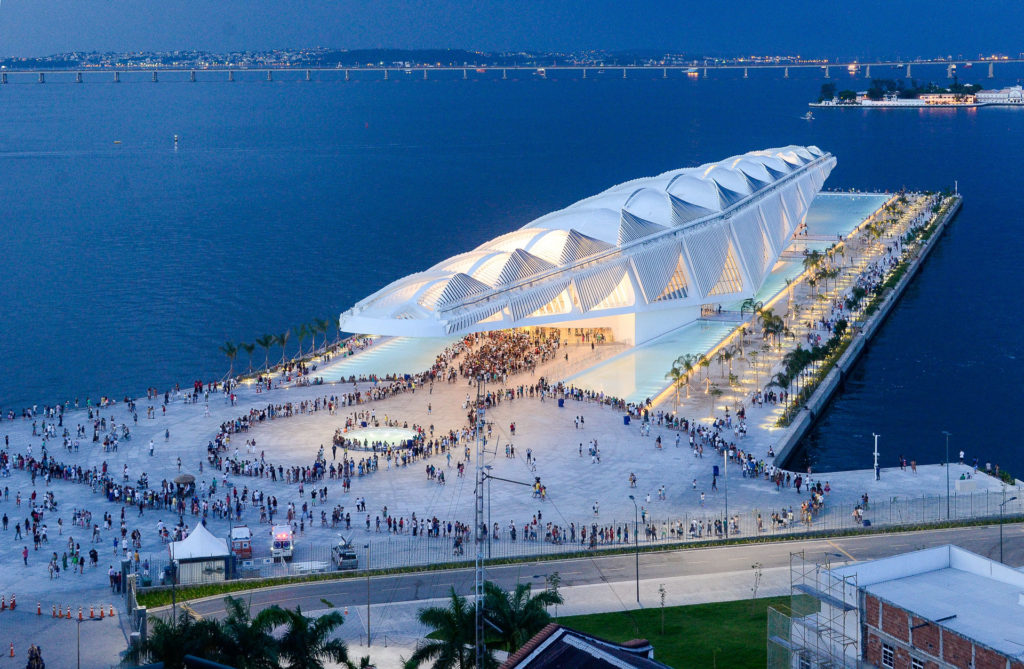
Museu do Amanhã. Photo courtesy Museu do Amanhã.
WHERE TO SHOP: Along Avenida Ataulfo de Paiva, in the upscale neighborhood of Leblon, where shoppers can find Brazilian swimwear favorite Lenny and trendy, sustainably-focused brand Osklen.
OTHER ART TO SEE: The Oscar Niemeyer-designed Museo de Arte Contemporáneo de Niterói as well as Niemeyer’s own home, Casa das Canoas.
FUN FACT: The Museu do Amanhã’s roof is made of fin-like solar panels that follow the sun. Its interior temperature is regulated by water from the bay, which supplies the outdoor reflecting pools before returning to the sea.